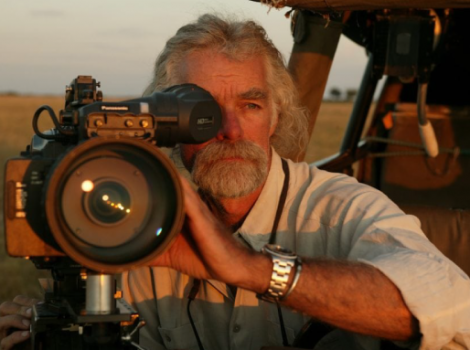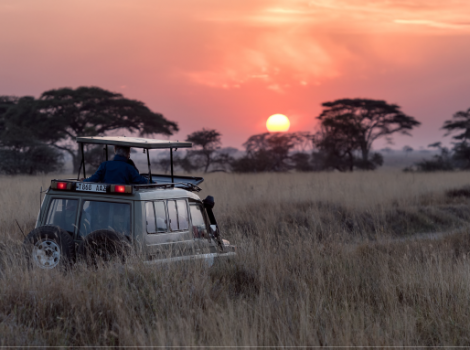Leighton G. Luke, Research Manager, Indo-Pacific Research Programme

Key Points
- The countries of the Southern African Development Community (SADC) region will be among those hardest hit by the economic impacts of COVID-19.
- In Mauritius and Seychelles, the contraction of Gross Domestic Product is predicted to be in double figures.
- The tourism sector will not be the sole path to recovery, but, in many countries of the region, it can offer the hope of a lifeline for at least one sector of the economy.
- The SADC has a clear mandate to drive the recovery of the regional tourism industry, in partnership with governments and the private sector.
- Possible challenges are likely to include the funding of promotional initiatives, often poor land transport infrastructure, the state of the civil aviation industry, and the need to protect locals and visitors from the spread of COVID-19.
Summary
The Southern African Development Community region comprises 16 mainland and insular countries: Angola, Botswana, Comoros, Democratic Republic of Congo, Eswatini (Swaziland), Lesotho, Madagascar, Malawi, Mauritius, Mozambique, Namibia, Seychelles, South Africa, Tanzania, Zambia and Zimbabwe. As of July 2020, the estimated total population of the SADC region is just fewer than 370-million people.[1] Among the various regional bodies that exist across Africa, the SADC ranks among the largest, in terms of the number of member states, and their population and gross domestic product (GDP).
In common with the rest of the world, the SADC countries are suffering from the economic damage inflicted by the COVID-19 pandemic. Despite the virus’s relatively late arrival on the continent, its public health and economic consequences have been felt just as acutely in Africa as elsewhere. As has been the case elsewhere, governments have taken different approaches to managing its effects, with varying degrees of success. Southern African standouts in that regard include Mauritius, Seychelles, Namibia and Botswana. As much of the world cautiously begins opening up again, finding ways to keep or return people to employment and rejuvenate local economies is vital. Given the wealth of attractions across the SADC region, the travel and tourism industry can play a key role in doing that. The time is now advantageous for the countries of the region to work together and actively promote their region’s open spaces and diverse attractions.
Analysis
Good News … and then Bad News
At the start of 2020, the tourism industry across Africa looked to be in for another good year, and was coming off another year of solid growth in which international arrivals increased by four per cent. According to World Tourism Organisation figures, in January and February, the number of international passengers arriving in Africa grew by an average of 2.5%. Importantly for a number of SADC countries, outbound tourist numbers from the key source markets of France, Germany and the UK continued to show solid growth.
In April alone, however, as lockdowns became the new normal, the number of arrivals fell by 94%. Across all of sub-Saharan Africa, international tourist arrivals over the first quarter were down by 35.2%. Unfortunately for local tourism operators, their industry is confronted by the combination of relatively limited numbers of domestic and intra-regional travellers and a high dependence on wealthy international visitors, many of whom are no longer willing or able to travel. In some SADC countries, governments have been able to provide assistance to those struggling with lost livelihoods. That is by no means the case everywhere and, in any event, the fiscal demands placed on often already cash-strapped governments mean that such support cannot be indefinite.
The World Bank predicts that global GDP will contract by 5.2% in 2020 as a result of the COVID-19 pandemic, with emerging and developing economies among the hardest to be hit. For many of the SADC countries, the news is even worse. Apart from South Africa (forecast to experience a 7.1% contraction) and Zimbabwe (-10.0%), with economies that were already experiencing substantial difficulties of their own making, the hardest-hit are expected to be those countries with highly-developed tourism and services sectors, including Seychelles (-11.1%), Botswana (-9.1%), Mauritius (-6.8%) and Namibia (-4.8%).
Angola, with its nascent tourism industry and continuing dependence on falling oil export revenues, is predicted to experience a four per cent fall in GDP. The estimates produced by the International Monetary Fund are a little less bleak, but the overall pattern is very much the same.
Growth is forecast to return to the region in 2021 – in some cases, quite significantly, yet still not enough to offset the damage done in 2020 – but that is still a long way off. Until that time, the trick will be to find ways to minimise the harm to economies and increasingly precarious livelihoods. The tourism sector will not be the sole path to recovery, but it can offer hope to at least one sector of the economy.
Tourism as an Agent of Recovery
Ranging from the wineries, safaris, cuisine and culture of South Africa to the little-visited equatorial jungles that are home to the mountain and lowland gorillas of the Democratic Republic of the Congo (DRC), the continental SADC countries alone are home to large numbers of remarkable sights, stunning landscapes and moving experiences. Offshore, the French-influenced island countries of Mauritius, Seychelles, Comoros and Madagascar bask in the warm blue waters of the Indian Ocean, with Madagascar also famously offering the chance to view lemurs in their natural habitats.
The SADC countries are clearly blessed with a range of visitor attractions and, prior to the pandemic, many had long-standing, successful tourism industries. As a source of jobs, foreign exchange and contribution to GDP, tourism has the potential to be a catalyst for recovery across much of the region.
In almost all of the SADC countries, prior to the pandemic, the travel and tourism sector made a significant contribution to national GDP (see Figure 1, below). Not surprisingly, perhaps, that was greatest in Seychelles (40.5 per cent of GDP, or US$657.5 million) and Mauritius (18.8 per cent, or US$2.67 billion). In common with Namibia (14.7 per cent of GDP; US$1.98 billion) and Botswana (12.6 per cent; US$2.32 billion), these countries have earned praise (particularly Mauritius), for their good governance, social cohesion and sound economic management, all of which are essential underpinnings for a successful tourism industry. Less expected perhaps may be the industry’s contribution to the GDP of Lesotho (12.3 per cent; largely driven by South African business travellers) and Madagascar (11.8 per cent; in this case, French leisure travellers are the single largest source market).
As might be expected from such figures, the industry is a significant provider of employment in many of the SADC countries. Once again, the leaders are Seychelles, Mauritius and Namibia, with the industry also accounting for a large number of jobs in the safari destinations of Botswana and Tanzania.
Of equal importance to local economies are foreign exchange earnings and the amount spent by international visitors. According to the United Nations World Tourism Organisation, on average, each international tourist spends US$1,030 in overseas destinations. Among the SADC countries, the amount spent varies widely, from US$10 per visitor in the DRC, to US$2,500 in Angola, US$2,400 in Madagascar and US$2,120 in Comoros.[2] Putting aside the oil-inflated costs of Angola, the figures from Madagascar and Comoros seem to confirm the worth of having a unique, high-value (if not always easy or accessible), offering.
SADC as the Driver of a Tourism Revival
The SADC began life as the Southern African Development Co-ordination Conference (SADCC) in April 1980. With the objective of increasing the level of economic development in member states, the SADCC membership consisted of the independent, majority-ruled states of Southern Africa at that time: Angola, Botswana, Lesotho, Malawi, Mozambique, Swaziland, Zambia and Zimbabwe.
In 1992, in the wake of a changing world order, the independence of Namibia in 1990 and the sense of an approaching end to apartheid in South Africa, the SADCC heads of state and government accepted that, while the organisation had done much to foster a greater sense of regional identity, it had fallen short in its goal of economic development. Recognising that greater levels of regional integration and a more formalised organisation to help achieve that were now required, the SADCC and the Memorandum of Understanding that governed it were replaced by the Declaration and Treaty Establishing the Southern African Development Community. The broad objectives of the SADC, as expressed in the Declaration and Treaty, are:
To achieve economic development; peace and security; growth; alleviate poverty; enhance the standard and quality of life of the peoples of Southern Africa; and support the socially disadvantaged through Regional Integration.
Also listed in the Declaration and Treaty are specific areas of co-operation, including food security, land and agriculture; infrastructure and services; industry, trade, investment and finance; human resources development, science and technology; natural resources and environment; social welfare, information and culture; politics, diplomacy and international relations. It is an ambitious and worthy agenda. Over the intervening decades, the SADC’s membership has expanded and, along with it, the number of official languages, from just the original English and Portuguese to also include French and, from 2019, Kiswahili. In terms of reviving a post-COVID tourism industry, a valuable component of many regional economies, SADC Common Agenda policy number six seems particularly relevant: ‘Promote and maximise productive employment.’ Of even greater relevance is the 1998 Protocol on the Development of Tourism, which sets out to:
…build upon the region’s potential as a tourist destination. SADC intends to ensure even distribution of tourism development throughout the region and to create a favourable environment for tourism, thereby using tourism as a vehicle for socio-economic development. … As well, the Protocol establishes systems for facilitating travel to Southern Africa, training for industry workers, and marketing the region as a tourist destination. The SADC thus has a clear mandate to drive the recovery of the regional tourism industry, in partnership with governments and the private sector. As is the case elsewhere, multinational hotel and tour operators, for instance, are better placed to ride out the COVID-19 storm than the many small- and medium-sized enterprises working in local tourism sectors. Keeping such small, local businesses alive must be a priority.
As much of the world cautiously opens up again, one way to do that could be for the SADC to revive its own, largely defunct, tourism marketing body, the Regional Tourism Organisation of Southern Africa (RETOSA). During the period when it was adequately funded, RETOSA was charged with encouraging tourism among SADC states and promoting the region to overseas travellers as a unique and varied destination. With funding restored, either RETOSA or the SADC Secretariat’s Tourism Unit could be an ideal vehicle for working with member governments, airlines, accommodation providers, tour operators and local industry representatives to craft marketing strategies for visitors from suitably low-risk countries to individual SADC countries, or one or more sub-regional groupings; for instance, a South African or Botswanan safari in combination with a visit to Victoria Falls, the deserts of Namibia, or further afield to one or more of the Indian Ocean islands.
In fact, as the country with the largest and most developed tourism industry, which is also home to the largest source market of intra-regional travellers, as well as the region’s main airport hub at Johannesburg and a lesser hub at Cape Town, together with the greatest number of international road connections and the favourable exchange rate of the rand, South Africa is well-placed to act as the lead attraction in any co-ordinated campaign to showcase the appeal of the more southerly SADC countries in particular. Attractions worthy of promotion would include its safari, cultural, historical, culinary, viticultural, trekking and adventure offerings, all of which could be used to entice travellers to explore just a little further afield in, say, the wilderness and wildlife of Eswatini, Lesotho, Zambia or Zimbabwe, not to mention the beaches and islands of Mozambique.
Possible Challenges
The need to fund any such campaigns, including the need to restore funding to RETOSA, if it is to be the lead agency, may present a challenge. A possible solution may be the imposition of a small levy on accommodation bookings for non-SADC nationals. With appropriate planning, the amount involved need not be large, perhaps ranging from between US$1 and US$2 per person per night, depending upon the type and location of the accommodation. Extra charges are never ideal, but, since the days of cheap, mass travel are unlikely to return for some time, the effect of a small additional sum on the majority of those making the journey to Southern Africa in this new era, be it for business or leisure, should still be quite manageable.
Possibly more challenging is a hurdle that has always been present across much of Africa: poor infrastructure. The region has enjoyed significant infrastructural improvements over the last decade, often funded (and largely constructed) by China, or, like the Kazungula Bridge over the Zambezi River to link Zambia and Botswana, funded by Japan. For the tourism sector, such new roads, railways and bridges have great value in making travel and border crossings speedier and easier. Beyond South Africa, the quality of transport infrastructure is generally lower; in places such as Malawi, the DRC and Madagascar, for instance, the quality of the road network can be abysmal. In such circumstances, COVID-safe air travel can often be the only option.
The health of the global civil aviation industry in the immediate post-COVID environment may be another potential impediment to a tourism-led recovery. With their high cost overheads and often thin profit margins, airlines have been hard hit by COVID-19. Around the world, a number of long-established airlines have already folded and the viability of those that remain has been seriously affected, such that further insolvencies are probably inevitable. In Southern Africa, as elsewhere, a reduced number of airlines offering fewer flights and charging higher fares may crimp the demand for travel.
It will, therefore, be more important than ever for the region that, in addition to being served by large, foreign airlines, its own carriers, with their extensive domestic and regional networks, remain viable. In the case of many of the smaller flag carriers, their continued survival, despite a frequent lack of profitability, hinges largely on being majority or entirely owned by their respective governments. The pressures on such airlines have only been magnified by the shutdowns, travel bans and unprecedented demands on the public purse of the COVID-19 pandemic.
Leading regional carriers South African Airways (SAA) and Air Mauritius are among the larger airlines in the SADC area most affected. Both were grappling with pre-existing profitability issues when the pandemic struck. Air Mauritius went into voluntary administration on 22 April, with a view to being restructured and restarted. The future of SAA, previously hanging in the balance, may now be looking a little brighter after Pretoria indicated that it would consider giving the airline a 21-billion rand ($1.8 billion) rescue package to pay off debts and ready itself for the post-COVID future. Given SAA’s position as the region’s main carrier (and one of Africa’s largest), if the airline were to fold, it and its feeder services would be sorely missed. Air connectivity across the region would certainly be poorer in its absence.
Also needing to be addressed in any regional tourism promotion campaign is the health aspect of travel. Airlines are at pains to reassure passengers that air travel in the COVID-19 era is safe and that their hospital-standard aircraft filtration systems do not spread the virus. Once a traveller has made peace with again being in aeroplane and airport environments, there remains the possibility of contracting COVID-19 while in Southern Africa. Although the relatively low incidence of cases across the region is, in most countries, largely due to low rates of testing, the likes of Mauritius, Seychelles, Botswana and Namibia have thus far contained the spread of the virus quite successfully. The favourable geography of those countries, as far-flung islands or sparsely populated, wide-open spaces, could certainly be used as a selling feature.
If done well, the potential is there for the SADC, via RETOSA, to reaffirm its value by leading a concerted regional effort to utilise the tourism sector as an agent of economic recovery. The travel and tourism industry cannot offer an across-the-board panacea but, with suitable marketing and measures taken to address potential challenges, it can offer the hope of an economic lifeline.
[1] Based on estimates compiled by the US Bureau of the Census using statistics from national population censuses and other data sources.
[2] From World Tourism Organisation using most recent full-year data (2018), except: Botswana (2017), Zimbabwe (2017), DR Congo (2016), Lesotho (2013).
Source: Tourism as an Agent of Recovery in Post-COVID-19 Southern Africa



